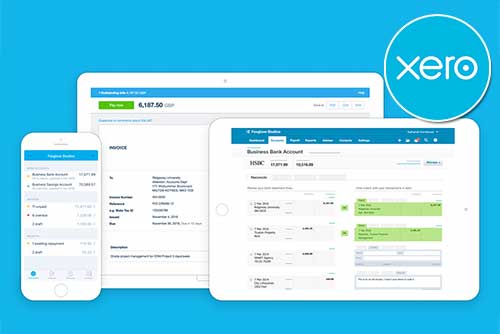Understanding Cash in Transit Accounting
In the world of finance and accounting, the term ‘Cash in Transit’ holds a significant place. It’s not just about the physical movement of cash, but also the accounting implications that come with it. Cash in transit accounting is just one of the many things business owners can easily forget about, at their peril.
Understanding ‘Cash in Transit’ is crucial for maintaining an accurate account balance and ensuring the smooth operation of a company’s accounting system. Let’s delve into its definition and workings.
What is Cash in Transit?
Cash in Transit, often abbreviated as CIT, is a term that refers to the physical process of moving cash from one location to another. This could involve the transportation of cash between banks, ATMs, retail stores, and cash centres, essentially any place where cash is held or used.
The CIT industry is a significant sector that provides secure means of transporting cash and other high-value items. It’s supported by an infrastructure that includes the manufacture of armoured vehicles, secure cases for carrying banknotes, and additional security measures to ensure safe transit.
In your books, Cash in Transit is a line item that represents the company’s cash that has been dispatched to the bank but has not yet been reflected in the bank’s records. It’s a crucial aspect of a company’s accounting system, helping to maintain an accurate account balance.
Here’s how it works:
- Initiation of Transfer: When a company decides to move cash from one location to another, an accounting entry is made to reflect this. The cash is debited from the account of the location it’s leaving and credited to a ‘Cash in Transit’ account.
- During Transit: While the cash is in transit, it’s not available for use in either location. It’s essentially in a state of limbo, reflected in the accounting system as ‘Cash in Transit’. This is a temporary account that tracks the cash until it reaches its destination.
- Completion of Transfer: Once the cash arrives at its destination, another double entry is made. The ‘Cash in Transit’ account is debited, and the cash account at the new location is credited. This reflects the increase in cash at the new location and the clearing of the ‘Cash in Transit’ account.
This process ensures that the company’s cash balance is accurately reflected at all times, accounting for any timing differences due to the physical transportation of cash. It’s a critical part of maintaining an accurate and up-to-date accounting system.
What is a Deposit in Transit?
A ‘deposit in transit’ is a term used in the accounting world. It refers to cheques or other non-cash payments that a company has received and recorded in its books, but which are yet to be cleared by the bank. This term is used to account for any timing differences that may arise during the clearing process.
In simpler terms, a deposit in transit is money that has been received and recorded by a company, but not yet processed and posted to the bank account. This concept is crucial in financial accounting as it helps to keep track of the company’s cash balance on its financial statements and reconcile it with its monthly bank statements.
The term ‘transit’ here refers to payments that occur between parties of different banks. The payment is then in transit from the payer’s bank to the payee’s. The recipient’s bank, unable to view the financial accounts of the sender’s bank, holds the deposit until it clears and is reconciled.
Here’s a simplified breakdown:
- Receipt of Payment: The company receives a check or non-cash payment from a client or customer. This is recorded in the company’s accounting system, increasing the account receivable balance.
- Deposit to Bank: The company deposits the payment into its bank account. However, the bank may not immediately reflect this in the bank balance due to processing time.
- In Transit Period: During this time, the deposit is considered “in transit”. The bank is verifying the legitimacy of the payment and ensuring there are sufficient funds in the sender’s account.
- Clearance and Reconciliation: Once the bank has cleared the deposit, it is reflected in the bank balance. The company then reconciles its book balance with the bank balance, accounting for any deposits in transit.
Understanding this process is key to maintaining accurate financial records and ensuring a smooth bank reconciliation statement. It helps to bridge the gap between the company’s receivables balance and its bank balance, providing a more accurate picture of its financial health.
Special Considerations in Cash in Transit Accounting
The timing differences in cash and deposit transits can often lead to discrepancies in the financial statements. For instance, a deposit may be recorded in the company’s accounting system on the day it’s received, but it might take several days for the bank to process and post it to the bank balance. This lag can create a timing difference, which is a crucial aspect to consider during bank reconciliation.
The time it takes for a transit item to clear can also vary. While some banks make funds from deposited transit items available the next business day, others may hold the funds for up to nine days as per Federal Reserve Regulation CC. This variation in time can further complicate the reconciliation process.
When dealing with cash and deposit transits, there are several risk considerations to keep in mind:
- Hold Periods: Banks often place holds on deposited transit checks, as allowed by Federal Reserve Regulation CC. This can delay the availability of funds, posing a liquidity risk.
- Clearing Time: The time it takes for a transit item to clear can vary, leading to timing differences. This can impact the accuracy of financial statements and bank reconciliations.
- Electronic Conversion Risks: While electronic check conversion can speed up the clearing process, it also introduces new risks. These include potential errors in conversion and increased vulnerability to fraud.
These risks highlight the importance of understanding the nuances of cash and deposit transits. It’s crucial for businesses to manage these risks effectively to ensure accurate accounting and maintain financial stability.
Why Do Deposits Take Time to Clear?
The process of clearing deposits involves several steps, which can explain why deposits take time to clear. Here’s a brief rundown:
- Initial Deposit: The depositor submits a check or initiates an electronic transfer as a settlement to the bank.
- Verification: The bank verifies the legitimacy of the deposit and checks for sufficient funds in the sender’s account.
- In Transit: The deposit is marked as “in transit” during the clearing process, which can take several business days.
This process is crucial for maintaining the integrity of transactions and ensuring that funds are available before they are credited to the recipient’s account. It’s a key part of bank reconciliation, which aligns the company’s balance sheet with the bank statement. This process can be influenced by various factors, including the type and time of the deposit, and the policies of the private industry and the bank itself:
- Bank’s Verification Process: Banks need to ensure the sender’s account has sufficient funds or the check/ACH payment is legitimate. This verification can extend the clearing time.
- Regulations: Laws like Regulation CC in the U.S. govern the cash holding duration, affecting the time it takes for deposits to clear.
- Technological Advances: The use of digital check images, mobile deposits, and OCR text recognition can speed up or slow down the process, depending on the bank’s adoption of these technologies.
Wrapping Up: Cash and Deposit Transits in Accounting
Understanding the intricacies of cash in transit and deposits in transit is crucial for maintaining an accurate account balance in any business. These concepts play a significant role in bank reconciliation, ensuring that the company’s cash balance aligns with the bank account balance. Moreover, the timing difference between the company’s accounting system and the bank’s business day can impact the reconciliation statement.
It’s essential to consider these factors to reduce investment work risk and maintain a healthy book balance. Lastly, legislation governing cash and deposit transits, along with the role of private industry in cash transportation, further underscores the importance of these concepts. By grasping these elements, businesses can ensure a more robust and secure accounting system.
Need an Accountant?
About the Author
Lucy Cohen, our Co-Founder at Mazuma, is a passionate innovator dedicated to revolutionising the accountancy industry. Over her 21-year career, including 18 years at Mazuma, Lucy has become an industry expert, contributing regularly to trade publications like Accounting Web and authoring acclaimed books such as “The Millennial Renaissance” and “Forget the First Million.” Her accolades include the Director of the Year (Innovation) by the Wales Institute of Directors and the Outstanding Contribution Award at the Accounting Excellence Awards.






















